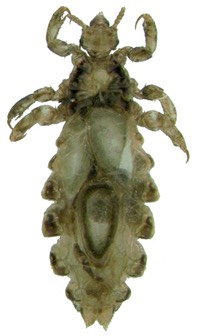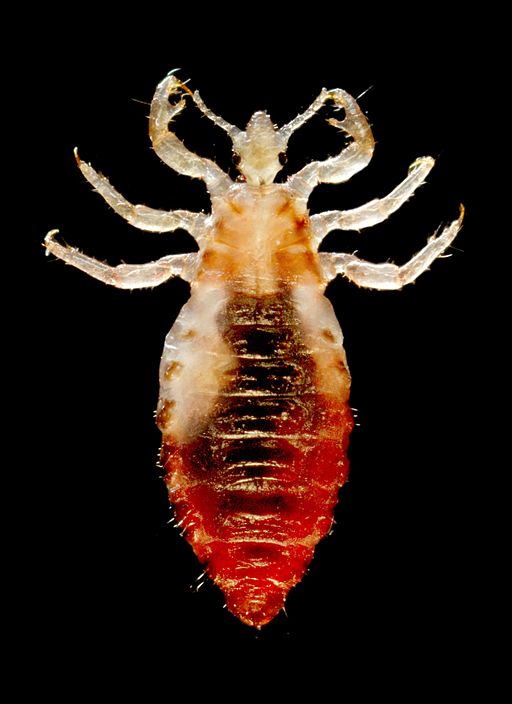Body lice (Pediculus humanus) are closely related to head lice, but are far less frequently encountered in North America. As the name implies, body lice almost always feed on thebody. They usually reside on shirts and other clothing nearest the skin, and the females generally deposit their eggs on or near the seams of garments. Body lice are acquired mainly through direct contact with an infested person or their recently worn clothing and bedding, and are most commonly found on individuals who infrequently change or wash their clothes. In North America, body lice are almost always restricted to the clothing of the indigent. Such infestations on children in North America would be extraordinarily rare.
A change to clean clothes, and laundering of infested garments (especially drying with high heat or ironing), are usually effective in eliminating body lice. Body lice (but not head lice or pubic lice) serve as vectors of certain human pathogens. Epidemics of louse-borne typhus, louse-borne relapsing fever and trench fever devastated the populace through the ages, and profoundly influenced the political map of our world. Louse-borne typhus, in particular, doomed Napoleon’s invasion of Russia, and caused him to part the huge parcel of land that is known as the Louisiana Purchase. Throughout history, fear of these diseases fueled atrocious and perverse campaigns to quarantine and assault unpopular ethnic groups suspected of promoting risk. Current efforts to seek out and quarantine individuals infested with head lice may be driven, in part, by those who misinterpret or intentionally misapply certain principles of public health. The most serious of the louse-borne diseases are prevalent mainly in restricted sites in parts of east Africa; these infections are virtually absent elsewhere, including in North America.
If you think you have encountered body lice and want to confirm their identify, you can send us a sample using our Specimen Evaluation Form.
This 2006 photograph depicted a dorsal view of a male body louse, Pediculus humanus var. corporis. Some of the external morphologic features displayed by members of the genus Pediculus include an elongated abdominal region without any processes, and three pairs of legs, all equal in length and width. The distal tip of the male’s abdomen is rounded, whereas, the female’s is concave. Body lice are parasitic insects that live on the body, and in the clothing or bedding of infested humans. Infestation is common, found worldwide, and affects people of all races. Body lice infestations spread rapidly under crowded conditions where hygiene is poor, and there is frequent contact among people. Note the sensorial setae, or hairs that cover the louse’s body, which pick up, and transmit information to the insect about changes in its environment such as temperature, and chemical queues. The dark mass inside the abdomen is a previously ingested blood meal.


